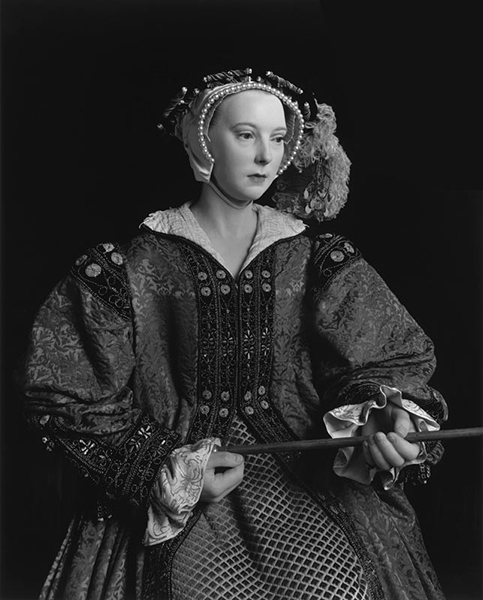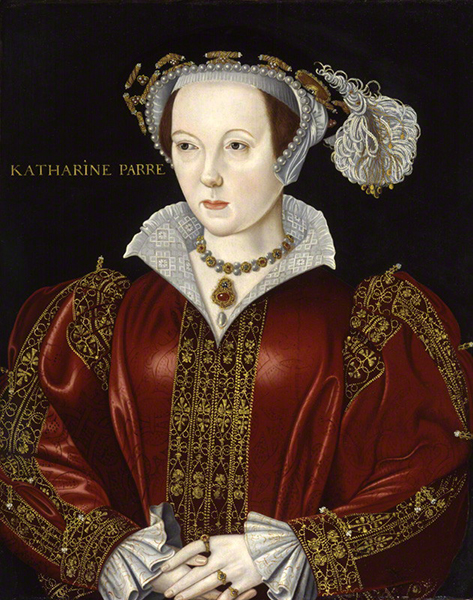One evening, as he is losing the king’s faith and his own power, Cardinal Wolsey counsels his protégé Thomas Cromwell on their present impasse. King Henry VIII will dissolve his first marriage and take Anne Boleyn as his new bride. Wolsey and Cromwell are to find the means to the king’s end.
Confounded, Cromwell questions how Anne could be a credible royal match. Wolsey responds with a long, evocative speech on the occult history of English kings. “You must go back before Caesar’s legions,” he begins, “to the days when the bones of giant animals and men lay on the ground where one day London would be built. You must go back to the New Troy, the New Jerusalem, and the sins and crimes of the kings who rode under the tattered banners of Arthur and who married women who came out of the sea or hatched out of eggs, women with scales and fins and feathers; besides which, he says, the match with Anne looks less unusual. These are old stories, he says, but some people, let us remember, do believe them…In these matters,” the cardinal continues, “there is no measure of time: these spirits slip from our hands and through the ages, serpentine, mutable, sly.” (Wolf Hall, p. 78-79)
Thomas Cromwell, the protagonist of Hilary Mantel’s 2009 novel Wolf Hall, is familiar with snakes. To win a bet when he was a young man in Italy, he tells Wolsey, he once held one to the count of ten. The snake bit him, Cromwell explains, but he held fast before he let it go, easing it to the ground, where it slithered away. He survived and was the richer for having brought it close and kept his grip. Wolsey is amused, as he so often is, with the resourceful Cromwell. They continue to talk. “Try always,” the cardinal finally advises him, “to learn what people wear under their clothes, for it’s not just their skin. Turn the king inside out, and you will find his scaly ancestors: his warm, solid, serpentine flesh.” (Wolf Hall, p. 82)
Later in the novel, when Cromwell returns from conference with Anne Boleyn, who will soon walk the nave of Westminster Abbey six months pregnant to assume her crown, the women of his house crowd around to ask how she looks. The appearance of royals arouses unabashed curiosity—they are to be looked at, scrutinized—but these women are not members of the Tudor court. They will not have seen Henry’s intended. And so they ask after her height, her complexion, her skill in dance, her dress. Cromwell is best able to answer about the last, describing the materials and cut of her clothes, pricing her, like the savvy tradesman he is, from “hood to hem, foot to fingertip.” He has not yet determined what she wears under her clothes, beneath her skin. But when his mother-in-law demands if Anne has good teeth, he answers, “For God’s sake, woman; when she sinks them into me, I’ll let you know.” (Wolf Hall, p. 170-171)

Hiroshi Sugimoto’s 1999 photograph Catherine Parr, gelatin silver print. Image courtesy of the Henry Art Gallery.
The figure in Hiroshi Sugimoto’s 1999 photograph Catherine Parr, like her predecessor Anne Boleyn, dresses sumptuously. She wears rich brocade adorned with beadwork. At her wrists are linen cuffs with gilt embroidery. A strand of pearls frames her face. But beneath her clothes, Henry’s sixth and final wife is not serpentine but an inert pulp. Her wax figure, which can be found at Madame Tussauds in London, where Sugimoto made his image, takes its form from a late sixteenth-century oil-on-panel painting whose author has been lost to history. And before Sugimoto’s gelatin-silver-print photograph, before Madame Tussaud’s wax figure, before the oil painting by the unknown artist, there was the body of a woman, her meat and sinew.

A late sixteenth-century portrait of Catherine Parr by an unknown artist, oil on panel. Image courtesy of the National Portrait Gallery.
Sugimoto’s black-and-white photograph makes Catherine palpably real, a pensive but commanding figure against a blank black background. Like Sugimoto, Mantel is an astute observer of surfaces and costume. “It’s for Shakespeare to penetrate the heart of a prince, and for me to study his cuff buttons,” she said in a speech called “Royal Bodies” she delivered at the British Museum two and half years ago. Mantel’s Cromwell is much like Mantel herself. Ill in bed near the end of Wolf Hall, he rests and dreams. “Ladies move behind his lids: transparent like little lizards, lashing their tails. The serpent queens of England, black-fanged and haughty, dragging their blood-soaked linen and their crackling skirts. They kill and eat their own children; this is well-known. They suck their marrow before they are even born.” (Wolf Hall, p. 568) Even in his nightmares, Cromwell notes the queens’ attire.
In her commentary about Sugimoto’s photograph at the Henry Art Gallery, University of Washington French and Italian Studies Professor Susan Gaylard writes, “The replication inherent to the photographic medium was actualized by Henry VIII’s multiple marriages, which collapsed the idea of the one divinely ordained chaste queen.” But Henry is not the only figure in Wolf Hall for whom multiples appear, each succeeding and supplanting her predecessor. After the unexpected death of his wife, Cromwell takes up with her sister, his married sister-in-law. She is so much like his deceased wife to him, in her voice, in her appearance, in her gesture, in her step. The multiple remains, though the original is lost.
Late in Wolf Hall, Cromwell advises a former suitor of Anne. Thomas Wyatt longs to be away from the court and queen. By this time, Cromwell knows Anne for the snake she is. As he talks with Wyatt, his mind goes to the suspicions that begin to surround her, the innuendos of her adultery and duplicity. She is, indeed, of more than one face. “They compete to tell stories of how she is not worthy. Or not human. How she is a snake. Or a swan. Una candida cerva. One single white doe, concealed in leaves of silver-grey; shivering, she hides in the trees, waiting for the lover who will turn her back from animal to goddess.” (Wolf Hall, p. 471) Catherine is multiple in death—her likeness taking form through different materials—but Anne is multiple in both life and death, a historical figure, as Hilary Mantel has said, upon whom we focus our own projections: man-stealing opportunist, sexual predator, even ambitious feminist. In her book, Cromwell succeeds and is, again, the richer man for keeping the serpentine Anne close. It isn’t until Bringing Up the Bodies, Mantel’s sequel to Wolf Hall, that Cromwell is able to let her go to slip away to her bloody future.
Mantel has also been praised for making the familiar story of Henry, his court, and his many wives new to us. She rescues Thomas Cromwell from history and makes of him a practical modern man with deep affections, a long and precise memory, and an exacting sense of loyalty. His peer Thomas More, the posthumous Catholic saint, is, in Mantel’s hands, sanctimonious and casually cruel. But even as she brings these characters to vivid life, always scrupulously faithful to the historical record that has come down to us, Mantel leaves the door open to superstition, to the slippery and unknowable. “In looking at royalty we are always looking at what is archaic, what is mysterious by its nature, and my feeling is that it will only ever half-reveal itself,” Mantel said in that same speech a few years ago. “…Royal persons are both gods and beasts. They are persons but they are supra-personal, carriers of a blood line: at the most basic, they are breeding stock, collections of organs.” About the reign of Henry VIII and her novels on the subject, Mantel then went on to say, “Women, their bodies, their reproductive capacities, their animal nature, are central to the story.”
For Thomas Cromwell, Henry’s will ultimately be the bite that poisons. Cardinal Wolsey, Cromwell’s patron, loved his king, but it seems he was right when he warned Cromwell about Henry’s “warm, solid, serpentine flesh.” Perhaps, then, it as Wolsey suggests. Maybe it is Henry’s inheritance from his snaky Tudor matriarchs that he wears under his splendid clothes, beneath his skin. And what of his last wife, Catherine Parr? When we try to hold on to Sugimoto’s Catherine, this royal woman “slip[s] from our hands and through the ages,” through paper and silver salts and gelatin, through wax, through wood and pigment and plant oil. We are left with her large, course hands, vestiges of a process of reproduction after reproduction after reproduction, where no original remains.
Hilary Mantel is currently at work on the last book of her Thomas Cromwell trilogy, The Mirror and the Light. The Henry Art Gallery’s single-work exhibition of Hiroshi Sugimoto’s photograph of Catherine Parr, The Queen, thrice removed, is on view in Seattle through Sunday, August 16.